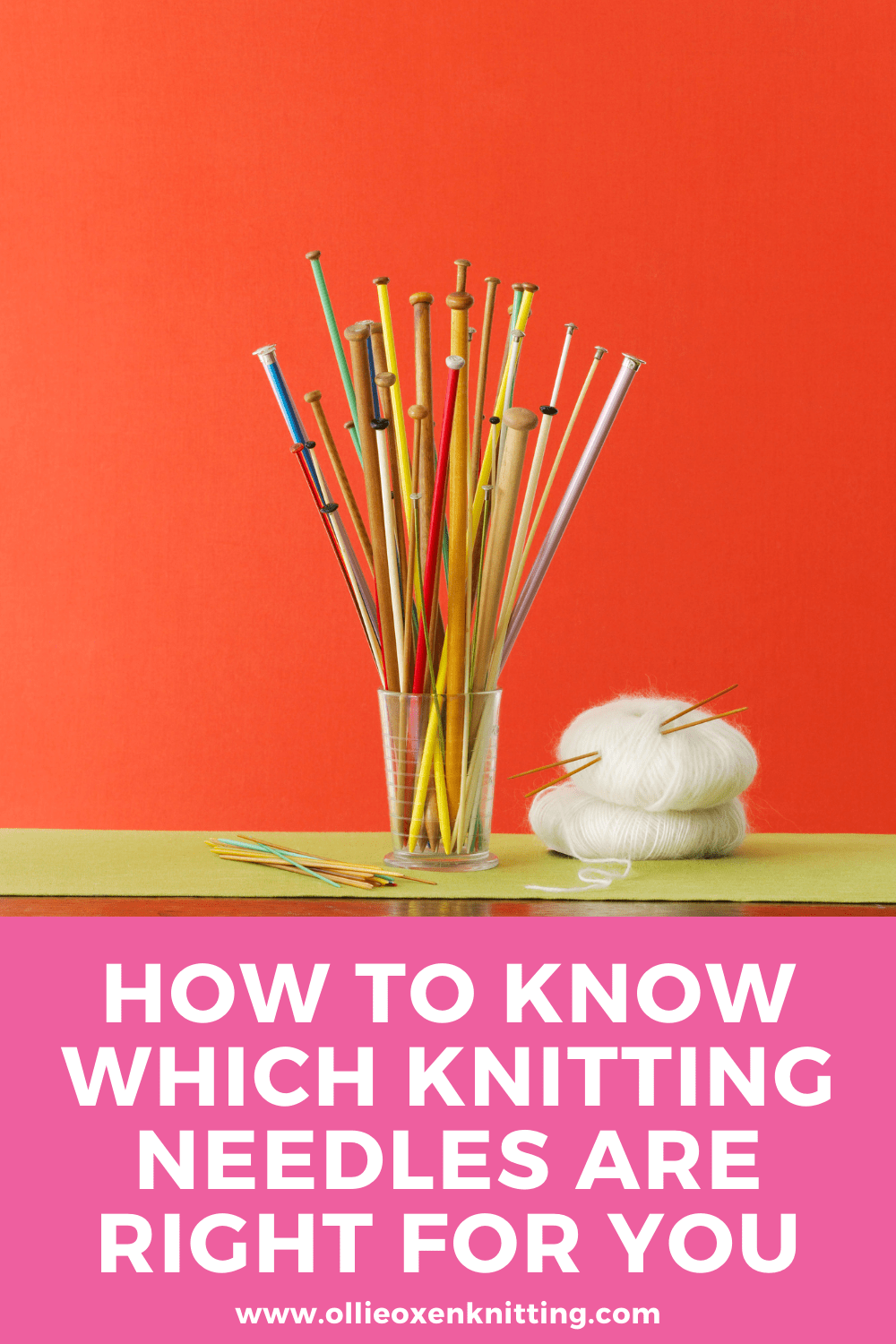Needles, Needles, Everywhere!
After you’ve picked out your yarn, it’s time to pick the right needles for the job. There are several options to choose from when selecting the perfect needles for your project. Don’t be afraid to explore! Try everything that catches your eye; that’s part of the lifelong fun of knitting. Now let’s learn about some needles, shall we?
Wood
Of the three types of needles, wood is my favorite. There are so many gorgeous options and the material itself can help make a difficult pattern more manageable. The grip of the wood makes it harder to drop stitches which is something we all want to avoid. Wood’s grippy nature doesn’t make it the best choice for speed knitting but it can still get the job done.
Metal
Metal is great for anything that you want to knit fast. Because it’s so smooth, things like plain stockinette zoom by on metal needles. It’s not so great with complicated patterns and cables; especially if you’re using a slippery yarn. The risk of dropping stitches is very high. Be aware that some people with circulation and arthritis issues say that they have a hard time knitting with metal.

Acrylic
Smack dab in the middle ground of slip and grip, we have acrylic. These are good for just about everything. Be aware that they don’t often come in the sizes needed for small knitting, so if you want to knit tiny, you’ll have to go with another option. If you decide to buy a clear version, be careful when knitting with dye-heavy yarns. These can stain your needles and give off a faint color.
Clear needles are not the best option for individuals with limited eyesight or for anyone using a dark color. Being able to see through the needle can make things very confusing; especially if you’re knitting anything other than stockinette. They can also squeak if you’re knitting with acrylic yarn. Hilarious the first few times, not so funny after a thousand stitches.
Straights
These are what most people think of when they think of knitting needles. They’re straight (shocker, right?) and they have a small stopper on one end to prevent your work from falling off. They’re great for helping new knitters understand the motion and to get in some great practice. If you’re knitting something large, these can be a bit taxing on the wrist since the full weight of the project will be on one needle at some point. You’re limited to working on flat pieces of knitting with straights but sometimes that’s just perfect.

DPN’s
DPN’s, or double pointed needles, may look intimidatingly but they’re pretty easy once you give it a try. They come in a variety of lengths and sizes depending on what you’re working on. They are commonly used for hats, socks, mittens, and other small items knit in the round. Most people knit with a total of five needles: four to make the “circle” and a fifth to take on the new stitches.

Cabled
Cabled needles are, in my opinion, the best of all worlds. You can knit items flat (like with straights) and in the round (like with DPNs) if you learn how to use the Magic Loop Method. Cabled needles also protect your wrists by letting a majority of the weight of your project fall into your lap.
They come in two versions: fixed and interchangeable options. If you go with interchangeable needles, you can have multiple projects going at once that use the same needle. All you need to do is remove the needle that you need and put it on the right project. (Just try to not let the WIP pile grow too high!) When selecting cabled needles, it’s important to look for flexible cables and a nice, smooth join. No grabbed stitches for us!

If You Had To Pick Just One…
If you can only afford one set of needles, I hands down recommend buying a set of light colored, laminated wooden needles that are part of a cabled, interchangeable set. If you can only buy a few needles from within the set, buy your standard gauge size and one below and above it. This will give you the most versatility of anything out there. Go ahead and grab a few extra cables the first chance you get and you’ll be busy for a long while.
Your Turn!
What are your needle suggestions? Let us know in the comment section down below!










